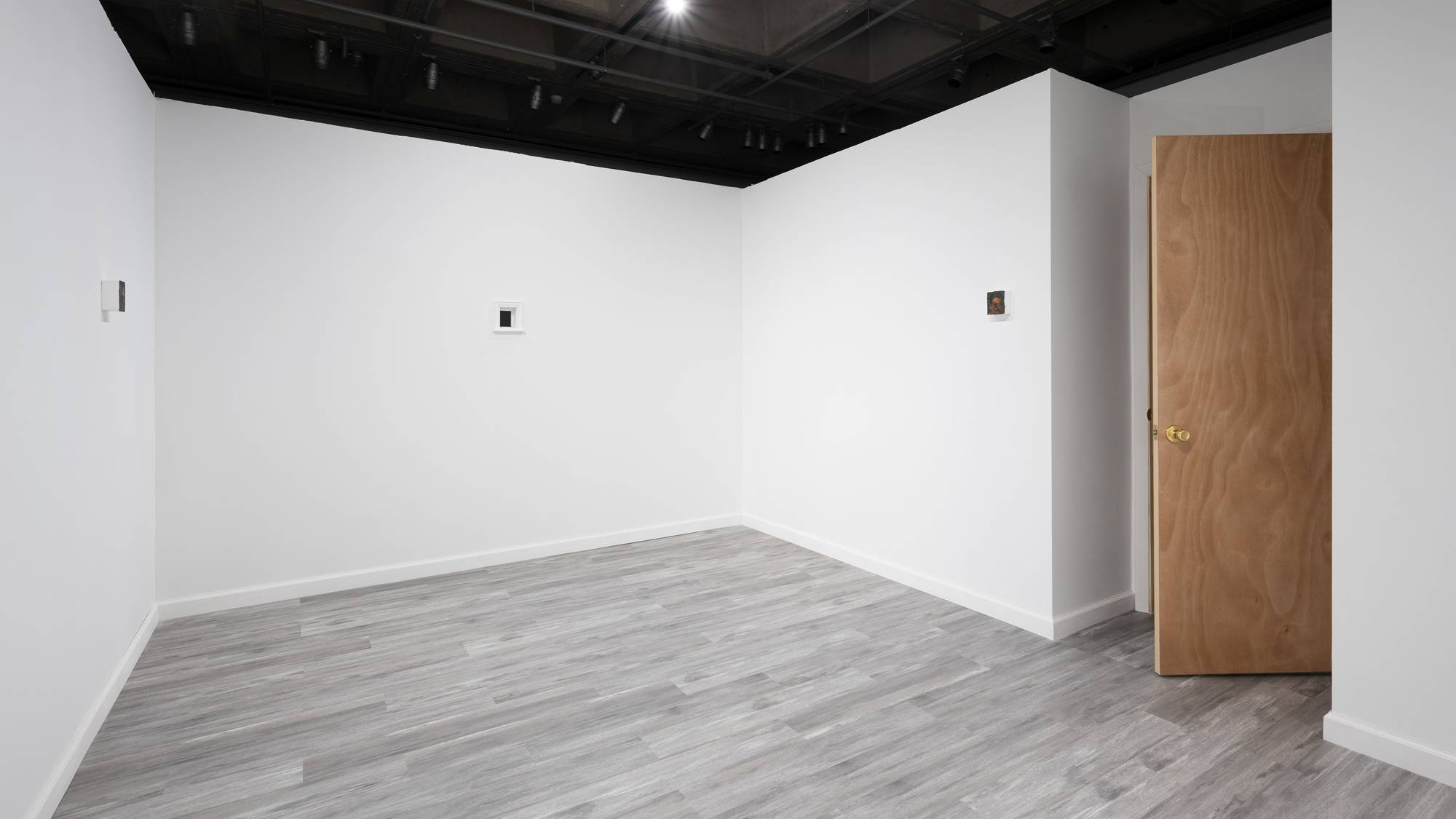Nestled within Little Hall’s Clifford Art Gallery, there sits a small white house composed of two windows, two doors, and an array of tiny portraits. The structure itself, a one-room building with white painted wood, may appear simple at the outset, but the complexity of emotions that can be felt while standing within those four walls is far from it.
This installation, fittingly titled The Little House, opened with a lecture and reception on Sept. 14. It is the result of a collaboration between Lecturer in Art and Art History Samuel Guy and multidisciplinary artist Marissa Graziano. While Guy and Graziano have been creating art side by side since grad school, The Little House marks the first time that the two have combined their artistic specialties in order to create an intersectional installation.
Guy specializes in painting, and Graziano focuses on works across painting, drawing, and visualization. Their talents come together seamlessly in The Little House to create an installation with far more impact than any solo effort. Through Graziano’s ingenious blocking of the house from floor to nonexistent ceiling and Guy’s striking portraits within, the exhibit comes to life as a space bordering between a gallery and a home, both unnerving and enchanting in its nonconformity with either label.
“The Little House is an alienated space,” explained Guy. “Structurally, it’s a one-to-one replica of a living space, but it has all the character removed to preserve the sense that it is a gallery. In this way, it lives somewhere in between.”
The origins of The Little House go back to March 2020 at a small lakeside cottage in Afton, N.Y. When Graziano and Guy first took up residence in the little cabin, they had no idea that the COVID-19 pandemic would make it their unexpected home for the next six months. In this state of limbo, Graziano experienced a shift in her way of thinking and viewing the world — one that would ultimately serve as the inspiration for The Little House.
“During those six months, I had to learn how to renavigate the world,” explained Graziano. “I couldn’t feel quite comfortable at the cottage, and I began to think about the lake in relation to traditional horror tropes, such as surveillance.”
One night, Guy and Graziano were taking a long walk around the lake and realized that most of their neighbors did not close their curtains and, thus, the inner workings of their homes were visible to all.
“It was a fascinating glimpse into domestic life, and I wanted to create something that could emulate the sense of discomfort and fascination that one feels looking in on others and being looked in upon.”
One way that Guy and Graziano achieved this dynamic of being both the viewer and the viewed is through the installation’s two hand-made windows. Despite being barely large enough to peer through, these windows were a source of much discussion and consideration between the two artists.
In her previous exhibits, Graziano traditionally employed peepholes as a way for visitors to experience the installation in a unique way, almost as spectators. On the other hand, Guy preferred not to have the portraits within the installation viewed in such a voyeuristic manner. As a compromise, Guy and Graziano instead chose to create small windows and place them parallel to important features of the room, such as the main entryway. By using windows as a visual entry point for the installation, Guy and Graziano created a restricted viewing experience similar to that of peepholes but without many of the negative connotations that accompany the term.
Recent graduate Destiny Sambrano ’21 returned to campus just in time for the opening reception and gallery viewing and was particularly taken aback by the power of the windows to make her aware that she was both observing the gallery around her and also being observed.
“Being inside of the room, I felt as if I was part of the art,” said Sambrano. “Perhaps what I appreciated most were the moments of connection that I felt as I peered out the windows and made eye contact with those looking in. Simultaneously, both I and they were the exhibit.”
Community members can experience The Little House for themselves in Little Hall’s Clifford Art Gallery and online at cliffordgallery.org through Nov 21. More of Graziano and Guy’s work can be found in the Brooklyn, N.Y., Greene House Gallery, which they co-own and direct.
